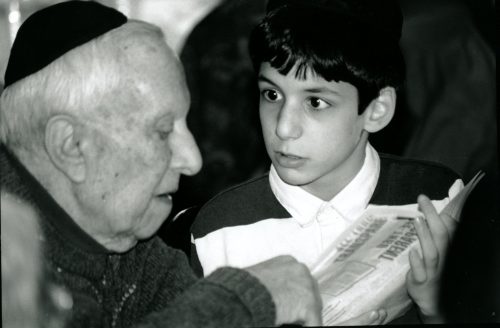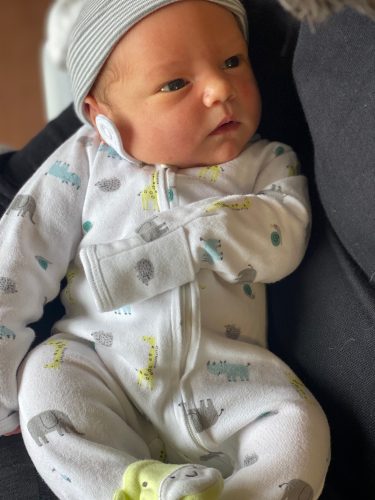Why is this Pesach different from all other Pesachs?

A blog post by JMM Executive Director Marvin Pinkert. You can read more posts by Marvin here.

Let me be honest. Passover is my favorite holiday- Jewish or secular. It is full of of everything that matters to me – family, history, the search for a more just and compassionate world, and, of course, great food! When people ask me “do you remember the first exhibit you saw?”, my typical answer is “yes, sitting at the seder table and watching someone picking up a piece of matzah like an historic artifact and asking “Mah zot?” (What is this?).
My passion for Passover makes me very sad that this year people all around the globe will be denied the pleasure of sharing the seder with those they love most. The plagues this year take on a new immediacy and I regret to say that marking our doors will afford no protection from Coronavirus. My first impulse is to remember that this isn’t the first time I spent Passover in quarantine. Back in 4th grade I managed to acquire strep throat two days before the holiday. I was confined to my room during the seder. My mom provided a plate with matzah and chicken soup and I recall that my dad improvised a speaker so I could listen in on the festivities, but it wasn’t the same.
These days I find myself increasingly thinking about those who would have been isolated from family this year even if there was no virus, for example, those who are in nursing care or in military service overseas. I am trying to use this pause in our daily routine to reach out (by phone) to people I care about, but have neglected in my busy life.
I also know that this won’t be the most unusual Passover I’ve ever celebrated. That distinction belongs to April 1978. At that time I was a newly minted foreign service officer assigned to manage the United States Information Agency’s small library in South Korea. At that time, the number of Jewish foreign service officers in that American embassy was small, consisting of the ambassador, the deputy chief of mission, the secretary of the deputy chief, and me – a junior officer trainee. So I was delighted when my wife and I received an invitation to Ambassador Sneider’s residence to share a seder meal with all the other Jewish families working for the embassy. The Ambassador’s household staff had laid out a beautiful seder table and the event began normally enough. But we had scarcely finished the ceremonial washing of the hands when an aide came in and whispered something in the Ambassador’s ear. The Ambassador got up and excused himself and disappeared into the next room. When he returned he said nothing but looked concerned.
This sequence of an aide coming in, our host leaving the room, and returning without comment was repeated at least four times between the karpas and Chad Gadya. As you can imagine this left me very curious about what was going on. But if I had learned one thing about diplomatic life, it was that no matter how strange things get, you don’t ask in public about matters that may not be your concern. The newspaper headlines the next day made clear what had happened. On that Passover eve the Soviet Union had forced a wayward Korean Air Lines passenger plane to make an emergency landing in Siberia (this was KAL flight 902 not KAL flight 007 when they infamously shot down the commercial jet killing all passengers). Ambassador Sneider was part of the team that Passover evening trying to negotiate the release of the passengers on flight 902 whom the Russians held hostage. So while we were singing “let our people go” in commemoration of ancient bondage, the ambassador was making the argument to “let our people go” with a much more contemporary objective.
So this Passover night will be different. We will join families with Zoom and Facefime, rather than being seated together. But the truth is that every Passover is different. The steps of the ceremony may remain constant but the context is always changing. Whether it’s events in the political world or changes in the composition of our family every seder night is truly different from all other nights.

On the iPad will be Madeleine Hermine Fisher-Pinkert, born last Monday in Boston. While it pains me that I’ll have to wait a while to hold my granddaughter in my arms, I find some comfort in these dark times from the lyrics of Laura Nyro* – “And when I die and when I’m gone, there’ll be one child born and a world to carry on, to carry on.” Have a great Pesach and stay safe.
*people of a certain age (like me) automatically associate this song with Blood, Sweat and Tears who made it into a hit tune. But it was actually written by a very young (17 year old) Jewish folksinger five years before B, S and T adapted it.

1 reply on “Why is this Pesach different from all other Pesachs?”
Thanks for sharing. And Mazel Tov